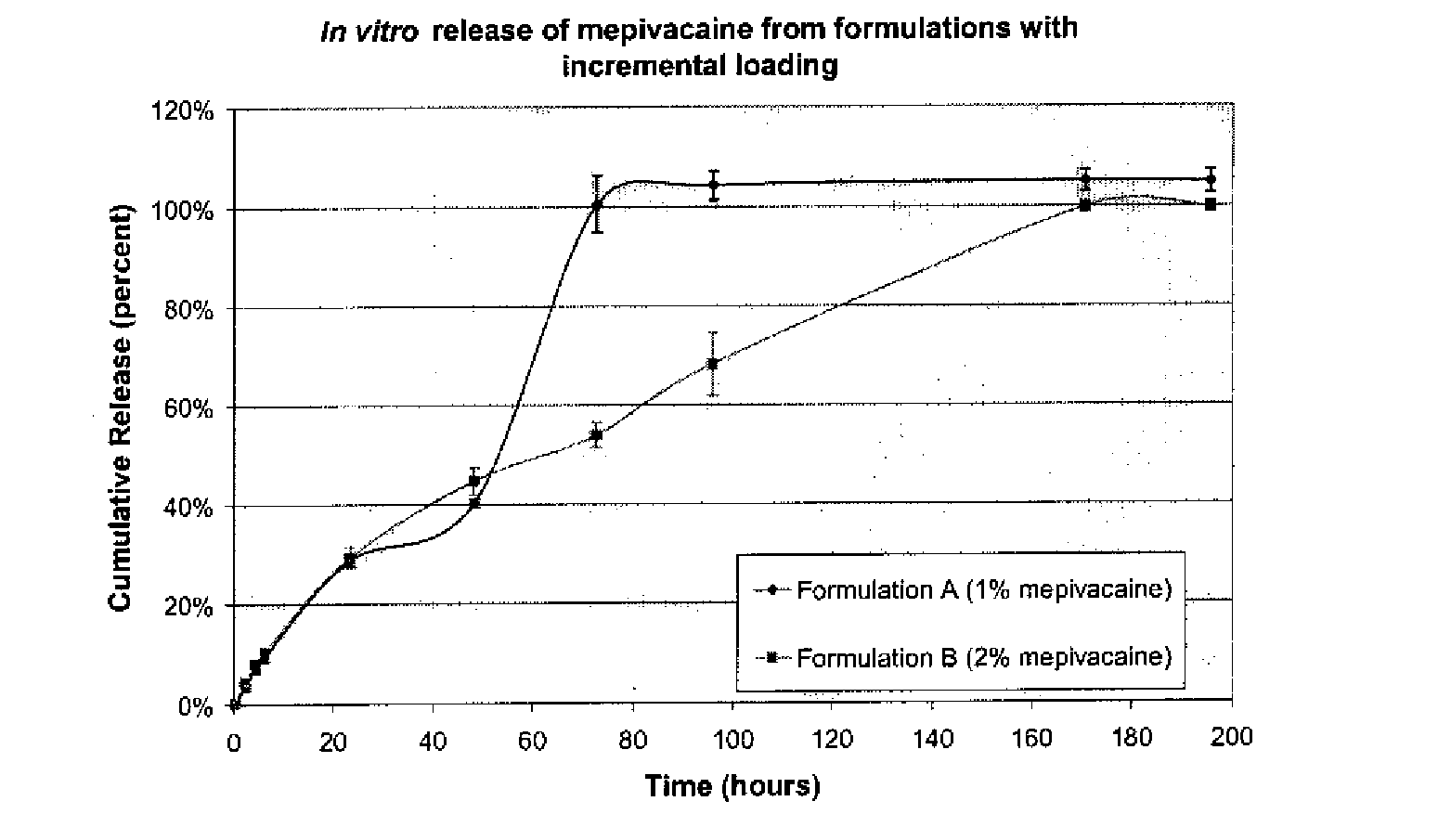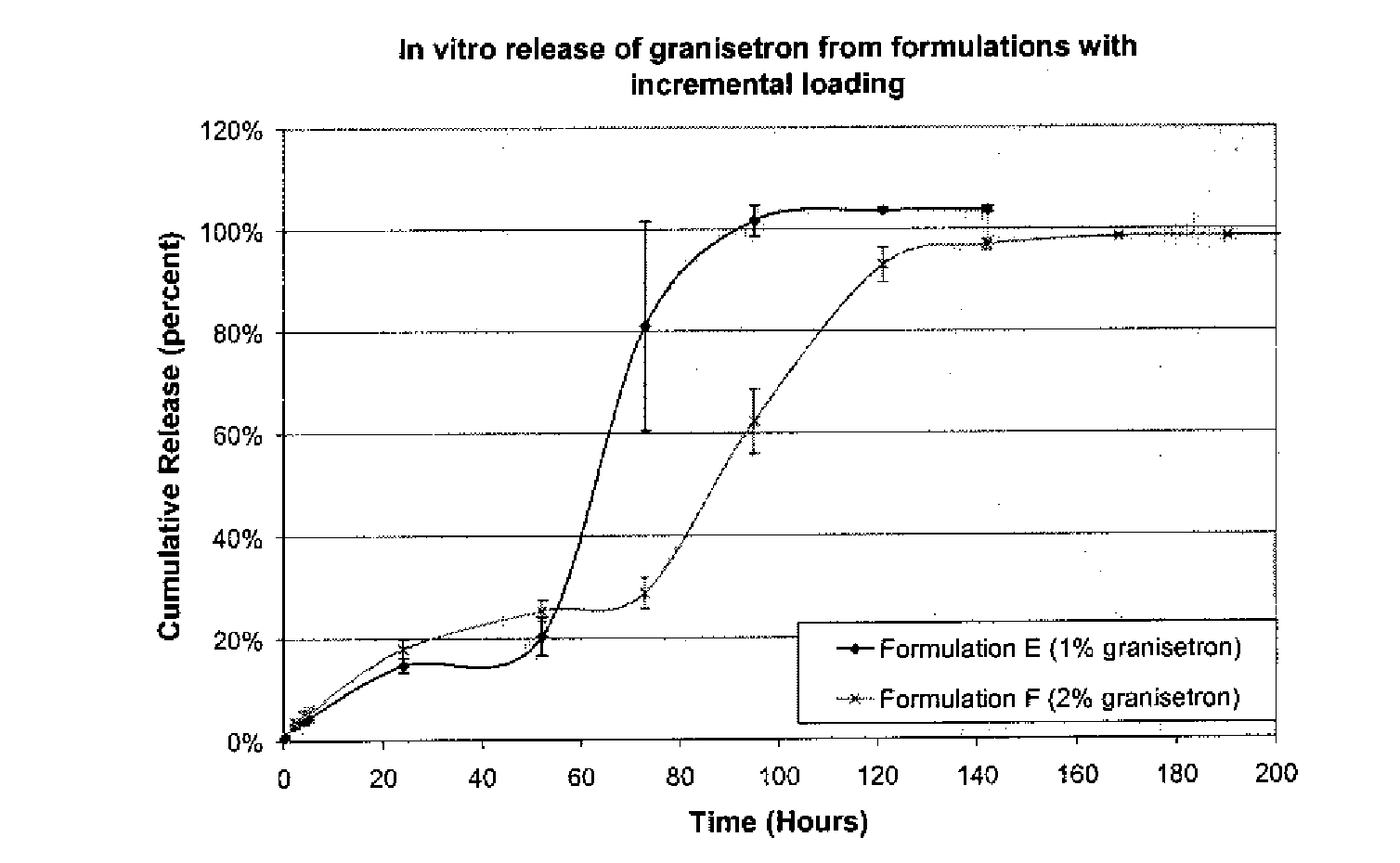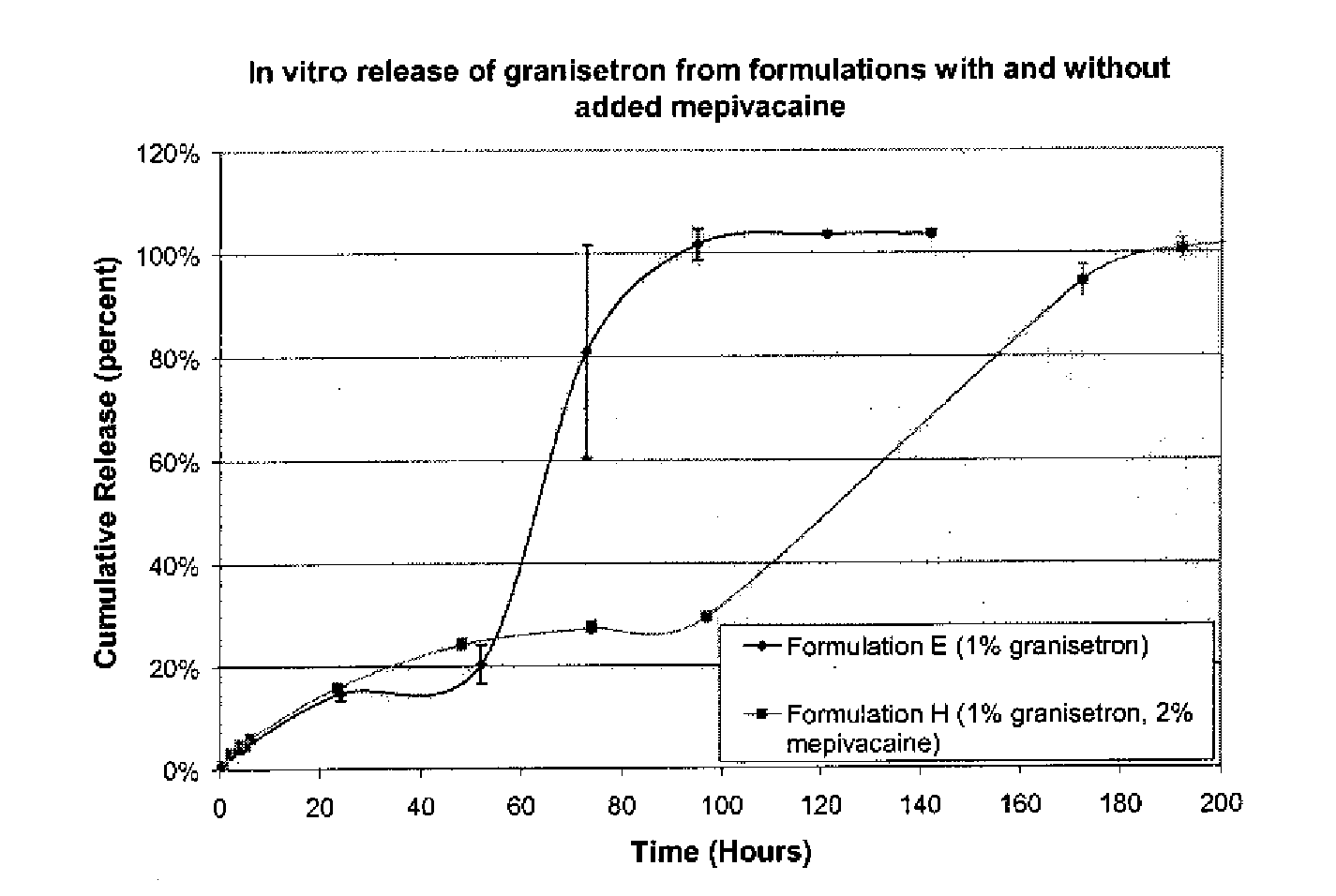Base-Stabilized Polyorthoester Formulations
a polyorthoester and base-stabilizing technology, applied in the direction of biocide, heterocyclic compound active ingredients, genetic material ingredients, etc., can solve the problems of low reproducibility, lack of reliability in the release pattern, and high cost, and achieve convenient and reliable adjustment, use of texture and viscosity
- Summary
- Abstract
- Description
- Claims
- Application Information
AI Technical Summary
Benefits of technology
Problems solved by technology
Method used
Image
Examples
example 1
Preparation of Polyorthoesters
[0264] The following syntheses illustrate the preparation of representative polyorthoesters. The starting materials are either commercially available or may be prepared as described in the preceding sections and in U.S. Pat. Nos. 4,549,010 and 5,968,543.
[0265] 1(a) The polyorthoester in this example was prepared from 3,9-di(ethylidene)-2,4,8,10-tetraoxaspiro[5.5]undecane (DETOSU), triethylene glycol (TEG), and triethyleneglycol monoglycolide (TEG-mGL). The molar ratio of the three components (DETOSU:TEG:TEG-mGL) was 65:95:5.
[0266] Under rigorously anhydrous conditions, DETOSU (6.898 g, 32.5 mmol), TEG (7.133 g, 47.5 mmol) and TEG-mGL (0.521 g, 2.5 mmol) were weighed into a 250 mL round bottom flask, and the mixture dissolved in anhydrous ethyl acetate (16 mL). To this solution was added a salicylic acid solution in ethyl acetate (12 drops, 10 mg / mL) to initiate the polymerization. The solution came to a boil within a few minutes. The solution was al...
example 2
Preparation of Pharmaceutical Compositions
[0271] Semi-solid pharmaceutical compositions with bupivacaine as the active agent were prepared by first milling the bupivacaine into fine particles and sieving, before mixing with selected amounts of a polyorthoester and an excipient. The mixing process was performed at room temperature under vacuum. Further size reduction of the bupivacaine particles was carried out by passing the semi-solid composition through a ball mill.
[0272] A. 60 wt. % polyorthoester (DETOSU / TEG / TEG-mGL 60:95:5) [0273] 40 wt. % bupivacaine. (control)
[0274] B. 40 wt. % polyorthoester (DETOSU / TEG / TEG-mGL 60:95:5) [0275] 40 wt. % bupivacaine [0276] 20 wt. % polyethylene glycol monomethyl ether 550.
[0277] C. 60 wt. % polyorthoester (DETOSU / TEG / TEG-diGL 60:80:20) [0278] 40 wt. % bupivacaine. (control)
[0279] D. 40 wt. % polyorthoester (DETOSU / TEG / TEG-diGL 60:80:20) [0280] 40 wt. % bupivacaine [0281] 20% wt. % polyethylene glycol monomethyl ether 550.
[0282] E. 20% w...
example 3
Release Profiles of the Pharmaceutical Compositions:
[0303] The semi-solid compositions of Example 2 were weighed, placed into bottles with screw caps. 100 mL of 50 mM PBS (pH 7.4) was added to each bottle. The test bottles were transferred to a 37° C. incubator and placed on top of a rotor shaker (36 rpm). At various time points, bottles were removed from the incubator and samples of about 5 mL were removed and analyzed for bupivacaine content by HPLC at 263 nm. The remaining volume of buffer was removed and replaced with 100 mL fresh buffer.
[0304] Composition B had an increased rate of release over the control Composition A.
[0305] Composition D had a similar release rate as the control Composition C.
[0306] These test results demonstrated that the pharmaceutical compositions of the present invention have the advantage that the release rates of the composition may be adjusted and controlled in a variety of ways. The rates of release can be adjusted to accommodate a desired thera...
PUM
| Property | Measurement | Unit |
|---|---|---|
| temperature | aaaaa | aaaaa |
| temperature | aaaaa | aaaaa |
| temperature | aaaaa | aaaaa |
Abstract
Description
Claims
Application Information
 Login to View More
Login to View More - R&D
- Intellectual Property
- Life Sciences
- Materials
- Tech Scout
- Unparalleled Data Quality
- Higher Quality Content
- 60% Fewer Hallucinations
Browse by: Latest US Patents, China's latest patents, Technical Efficacy Thesaurus, Application Domain, Technology Topic, Popular Technical Reports.
© 2025 PatSnap. All rights reserved.Legal|Privacy policy|Modern Slavery Act Transparency Statement|Sitemap|About US| Contact US: help@patsnap.com



